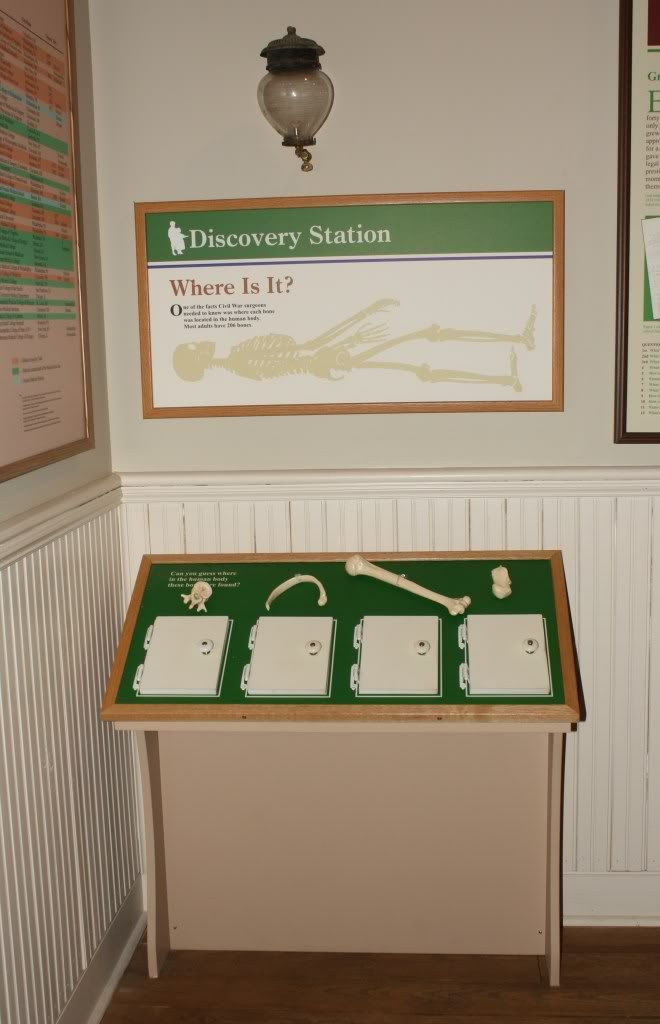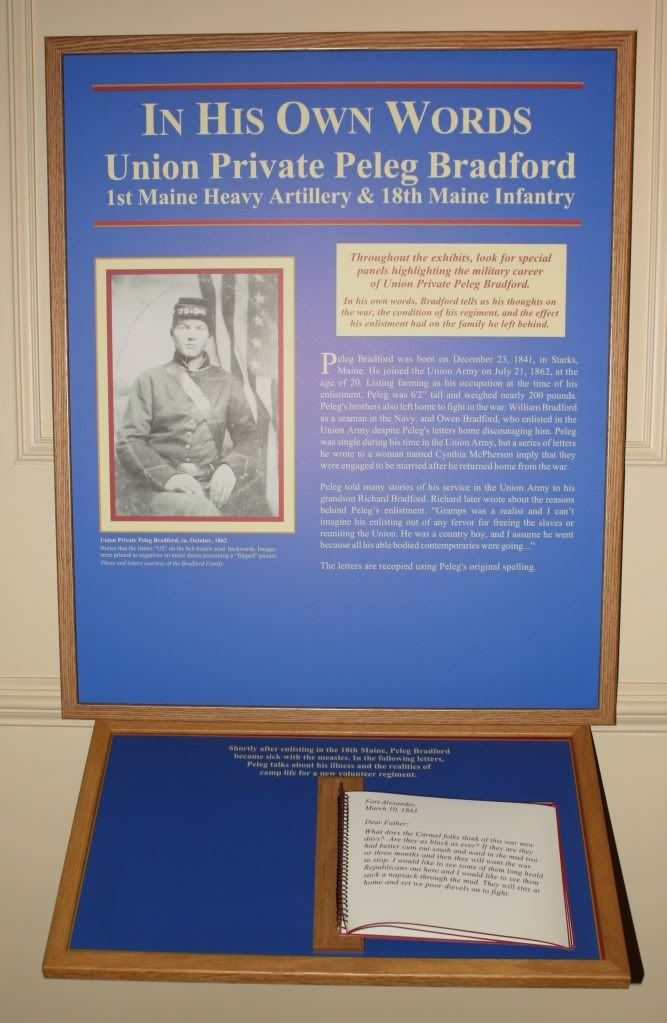If you’ve ever been camping, you know that
it’s helpful to bring along a camp chair.
Surgeons in the Civil War discovered the same thing!
 |
| In this Library of Congress photo taken in 1863, and titled, “Bealeton, Va. Noncommissioned officers' mess of Co. D, 93d New York Infantry” you can see that the men are seated on folding camp chairs. |
Let’s find out a little more about the
owner of this chair. Sheffield Wells
Greene was born in Hopkinton, Rhode Island, in 1814. He attended Geneva Medical College in 1845
which made him a bit older than most medical students. He began practicing medicine after his
graduation in 1846. On December 26,
1863, he enlisted with Company D, 15th New York Cavalry
Regiment. I was not able to find an
image of him, but the vital statistics on his enlistment papers list him as
being a 44 year old physician, 5’ 10” tall, with gray eyes, black hair, and a
dark complexion. There is a discrepancy
here regarding his age, as according to the birth date listed in his family
records he would have actually been 49 years old when he enlisted. It’s possible he was afraid of being rejected
and so lied about his age. It’s also
possible the age listed on his enlistment papers is a clerical error. In either case, it is interesting to note that he was older than the average Civil War recruit.
Though there is no record of Assistant
Surgeon Greene being wounded in battle, he was sent to the Geisboro hospital in
Washington D.C. in April 1864. A month
later he returned to camp, but it was recorded that he was still unable to
perform his regular duties. There is one
notation in the Company Muster Roll which indicates he was “Absent on detached
service” and assigned as a nurse at the Camp Stoneman Hospital starting in July
1864. It was a common practice at the
time to assign some of the nearly-recovered patients to nursing duties.
An excerpt from a later letter to the
Pension Office uncovers the reason for his hospitalization: “…during
the forepart of the months of April 1864 while on return march from Burlington
Gap, West Virginia [we] dismounted. And
in consequence of exposure at Springfield, West Virginia, and being under orders
to continue the march of the mountains on the way to Pleasant Valley state of
Maryland was turned over by Order for Rupture to the camp Hospital at that
place and remained there about one week, and from there to Washington D.C. My comrade Rev. David Rittenhouse who had
entire charge of me and had the said order of the evidence of this disability
that the Diarrhea followed in train, from which I never recovered, and that I
was treated for Rupture in the Hospital by the proper treatment of Suspencery
Bandages and for the Diarrhea secundum artem and that I was in the fourth ward
Hospital at Camp Stoneman D.C. and also at Judiciary Square Hospital D.C.
December 1864 and remained there until in January 1865 and that said Rupture
was brought upon me as alleged in my original applications by carrying heavy
Cavalry Baggage on the return march from West Virginia.”
In other words, he developed a hernia, and
chronic diarrhea - a prevalent complaint for
Civil War soldiers! A hospital record
from his stay at Judiciary Square General Hospital in December 1864 lists his
age as 50 (which supports his enlistment age of 49). He was diagnosed there with hydrocele and was
granted a furlough on December 16, 1864.
After reporting back for duty in January 1865, he was commissioned into
Field & Staff New York 147th Infantry. Despite his medical issues, it appears that
he continued to serve for as long as he was able. He was mustered out on June 7, 1865, and he
returned home to New York to practice medicine.
 |
| There are no manufacturer’s marks on the chair, but it does have the initials ‘S.W.G’ stenciled in black paint onto the back of the chair. Perhaps they were put there by the doctor himself? |
In 1882, Dr. Greene applied for a
pension, but a series of letters between him and the pension office indicate
that there was some question as to whether his disability was sustained during
his service or was a preexisting condition.
Ultimately it was argued that his recruitment papers stated he had been
examined by a physician and found to be in good health when he enlisted. It took four years, but his request was
finally approved. He died in 1899 at the
age of 85, and is buried in the Richburg Cemetery in Wirt, NY.
A bit more about Dr. Greene is found in
the book, Allegany County and Its People: a centennial memorial history of
Allegany County, New York, by John Stearns Minard and Georgia Drew
Merrill. The conclusion of the summary
of his life tells more about his character, “The
doctor for 40 years has given arduous and unspared labors for the relief of
human suffering, and can look back along an honest and diligent life with a
consciousness of doing well all duties falling to his lot.”
Photos courtesy of the National
Museum of Civil War Medicine, except where otherwise noted.



























